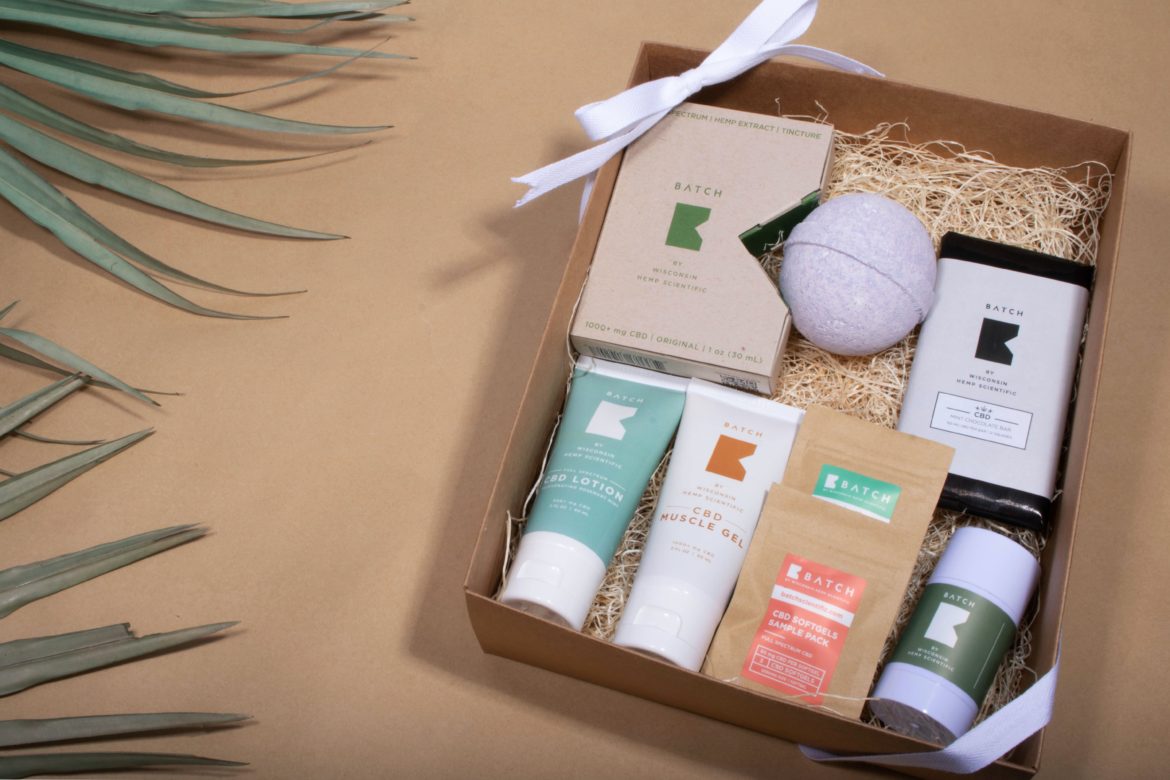|
Getting your Trinity Audio player ready...
|
This is an excerpt from our free-to-download report, eCommerce in Publishing: Trends & Strategies
In this chapter, we share five different mechanisms being deployed by publishers to tap into the growing potential for eCommerce.
Although affiliate revenues remain an important plank in publishers’ eCommerce strategies, they are far from the only method being used.
Increasingly, publishers are looking to diversify their eCommerce activity, developing their own online stores, as well as exploring shoppable content on social media and opportunities to tap into the wider subscription economy.
Here are five of the most promising ways publishers are going beyond affiliate relationships to develop their eCommerce revenues.
Online Stores
Having a shop on your website is not necessarily a new idea for many publishers, but we are seeing two discernible trends in this space.
The first is the growth in publishers offering merchandise related to their brand. GQ U.S., for example, launched its first-ever eCommerce shop in August 2020. Selling products costing between $40 and $100, its owners, Condé Nast, described the initiative as “the next logical step in the brand’s eCommerce ecosystem.”
“The GQ logo is a global icon—synonymous with great personal style, of course, as well as with a forward-pushing, progressive idealism,” said editor-in-chief Will Welch, in a press release.
“Our audience has made it clear that while it’s great to look or feel or even be GQ, they also want to wear our logo. So today, we’re answering the call with the launch of The GQ Shop. We started by making a handful of cool T-shirts that myself and the team could see ourselves wearing everyday.”
The opening of the GQ Shop was built on the success of GQ Recommends, which launched in January 2018. By summer 2020, these editor-picked selections generate affiliate sales, and revenues from this are up over 100% YTD compared to 2019, the company reported.
Other publishers selling branded apparel include the LA Times, The Economist and The Boston Globe.
Beyond selling branded merch – in the form of mugs, t-shirts and other apparel – the second discernible trend is that purchases are completed on a publisher’s own site, rather than users clicking away for an order to be fulfilled on another site, like Amazon.
Such moves enable publishers to keep readers on-site and this type of native commerce is increasingly being deployed by a wide range of publishers.
One solutions provider, StackCommerce, works with more than 1,000 publishers and over 5,000 brands, offering everything from the building of white label stores through to “shop UI, product sourcing, merchandising, logistics, creative, customer service, and more.” Their clients include Mashable, CNN, New York Post, Entrepreneur, TMZ and Yahoo!.
Stack’s Content Studio can also write articles to support store products, so that publishers don’t necessarily have to use their own internal editorial resources to support these efforts.
Subscription Boxes
Subscription eCommerce is a growing trend across multiple industries and one being used by a wide variety of different businesses. Publishers are also tapping into this space in a number of different ways.
Alongside launching an online store, in January 2018, GQ launched their Best Stuff Box, a quarterly package containing apparel, grooming products and style accessories. Revenues from the subscription-based GQ Best Stuff Box were also up over 150% by August 2020.
At the end of 2021, GQ subscribers could get the four boxes for $190 (a $10 discount on the $50 box price, as well as a free subscription thrown in for good measure) with an even steeper discount – 50% – offered on their limited-edition Future of Grooming Box.
Other outlets have followed suit, with InStyle and The Cut launching their first product boxes in November 2021. Meredith’s InStyle magazine offered a limited-edition beauty box, with the contents “tailored to your astrological sign.”
Products like this can be very appealing for companies due to their potential to provide predicted revenue streams, as well as their ability to yield valuable consumer data.
Digiday also explains how product boxes “can be a tactile way for a media company to engage with people, show off its editorial curation abilities with products that people want to try out (and for less money — most boxes can be bought at a price lower than the total value of the products inside).” Alongside these consumer benefits, this can also “deepen relationships with advertisers and diversify its eCommerce offerings,” they note.
Product subscriptions can take other forms too. Men’s Health UK launched a food delivery service, called “Fuel,” in summer 2020. With a rotation of 180 recipes, subscribers can choose from one of four different meal plans, depending on their goals. Prices range between £6.99 – £8.99 per meal.
Other ideas
Beyond online stores and subscription boxes, there are other eCommerce activities that publishers are also pursuing. These are not as prevalent but are sources of revenue generation that are worth monitoring and considering.
Membership Schemes
Accessories and beauty products might be the most obvious uses for subscription boxes, however, a number of publishers have long tapped into this model for another product: wine.
The Sunday Times Wine Club might be the oldest of these services. Launched in 1973, it counts over 23,000 UK wine lovers among its membership and notes that “we’re one of the world’s most successful home-delivery wine merchants, with over 40 years experience and over 700,000 customers across the globe.”
It offers a raft of products and services, from quarterly delivery of cases (with tasting notes), through to a podcast, special events, as well as access to Wine Advisors, and the ability to buy wine from them for your wedding.
For affiliate partners, they offer a 5% commission on sales, a conversion rate of 5.5% and an average order value of £116.
On the other side of the pond, NPR, The New York Times and Eater, are examples of U.S. companies dabbling in this domain.
Local publishers can also get involved. Strategically this makes sense for those, like The Oregonian – a newspaper based in Portland, Oregon – that are situated in wine country. The paper partnered with Cellar 503, a local wine club, back in 2018 to launch its programme.
Member benefits include: access to complimentary tastings, discounts, referral bonuses, members-only pricing for Cellar 503 special events (such as Pour Oregon, their annual wine festival), a discount card to use at over 75 of our winery partners, and special pricing if you want to rent Cellar 503’s tasting room.
Products come from all 21 Oregon wine regions, and smaller vineyards, wineries producing less than 10,000 cases a year.
Rachel del Valle, a writer living in New York, reported at the end of 2020 that “some [wine] clubs have seen an increase in signups since the pandemic began in March,” a trend which may well have continued due to some people’s COVID-era drinking habits.
Retail Partnerships
Meredith announced in September 2021, that it would be partnering with Walmart, using AI to support meal planning and shoppable recipes, using visual search, chatbots, virtual assistants and social media.
With titles including Allrecipes, Better Homes & Gardens, Parents, EatingWell and Real Simple in their portfolio, Meredith reaches 95% of U.S. women through their different media properties. “Meal plan” related articles and content is projected to be up 30% across their sites in 2021.
In a press release, the companies commented on how the partnership would incorporate a number of proprietary tools and content, including: “Meredith content taxonomy and predictive insights — including concept demand curves,” as well as “visual search technology will enable consumers to photograph ingredients that they have on hand and get meal suggestions using those ingredients,” and a shoppable “bookazine” called
“Allrecipes 30 Minute Meals,” with editor-curated recipes, that can only be purchased at Walmart stores.
The move isn’t Walmart’s first media partnership. BuzzFeed’s Tasty brand has had a long-running association with what is the USA’s largest retailer (with global sales in 2020 double that of Amazon) and the world’s largest grocer.
In late-2017, Tasty’s step-by-step recipe videos began to include links to buy products featured in the videos from Walmart.com and Jet.com (owned by Walmart). By early-2018, this was expanded to include a range of Tasty-branded cookware that was exclusive to Walmart, followed a year later by the introduction of “shoppable recipes.”
As BuzzFeed excitedly told its readers:
”When you’re scrolling through the Tasty app and see a recipe you want to make (like sushi rice dip, for example), you can tap a button to buy the ingredients needed and have them ready for curbside pickup. Wow, such convenience!”
BuzzFeed reported revenue was up 51% in Q2 2021, with numbers published in September showing that commerce and other revenue increased 82% to $17.1 million year-on-year at the publisher.
Classes and Courses
Some publishers have long offered classes. The travel magazine Wanderlust, for example, has offered photography courses around the world (I undertook one in Marrakesh back in 2008).
Newer kids on the travelling and exploring block, like Culture Trip and Atlas Obscura, have similarly moved into offering real-world and – online – experiences, the latter in response to the challenges of physical travel during a global pandemic.
B2B providers can also offer online courses.
ZDNet Academy describes itself as ”an ongoing education repository for training and certifications for technical professionals.”
Alongside the ability to undertake online courses, they also highlight deals on products that may be of interest to their readers; such as noise-cancelling headphones. (Disclaimer, I write a monthly column for ZDNet and have done since late-2013.)
Meanwhile, leaning into the pandemic, has encouraged publishers like Hearst (Men’s Health, Women’s Health, Runner’s World, Cosmo) to offer online fitness classes.
That’s a space that other outlets – like POPSUGAR – are also active in.
POPSUGAR decided in March 2020 to make its planned paid-for monthly subscription fitness app, Active by POPSUGAR, “free of charge for the foreseeable future.” The app and website offer a wide range of workouts (more than 500) with many of them sponsored by clothing and sports drink companies, and featuring affiliates links through to the attire worn by the trainer.
Alongside efforts to maintain fitness during the pandemic, many homeowners have also seen lockdowns and restricted travel as an opportunity for home improvement.
Family Handyman DIY University, from Trusted Media Brands, offers a range of free and paid-for classes focussed on DIY projects.
An offshoot of their print magazine, the direct-to-consumer product revealed that transactions in April 2020 increased by 53 per cent and revenue rose 72 per cent year-over-year, in the midst of stay-at-home orders around the world.
Some of their most popular classes that month included “How to Power Your Home with Renewable Energy,” “How to Build a Backyard Shed” and “How to Build a Deck.”
As we can see, through the utilisation of online stores nestled into your website, subscription boxes and other programmes, product focussed membership schemes, as well as retail partnerships and opportunities for online courses and classes, publishers are going beyond affiliate to also explore other means to engage in eCommerce.
Some of these ideas have been around for some time. Others are becoming more commonplace, reflecting increasingly standard website architecture, and COVID-era consumer realities.
Collectively, they demonstrate that when it comes to revenue diversification, that’s a sentiment that’s as applicable to a publisher’s eCommerce activity as it is to their wider philosophy for income generation.
This is an excerpt from our free-to-download report, eCommerce in Publishing: Trends & Strategies



